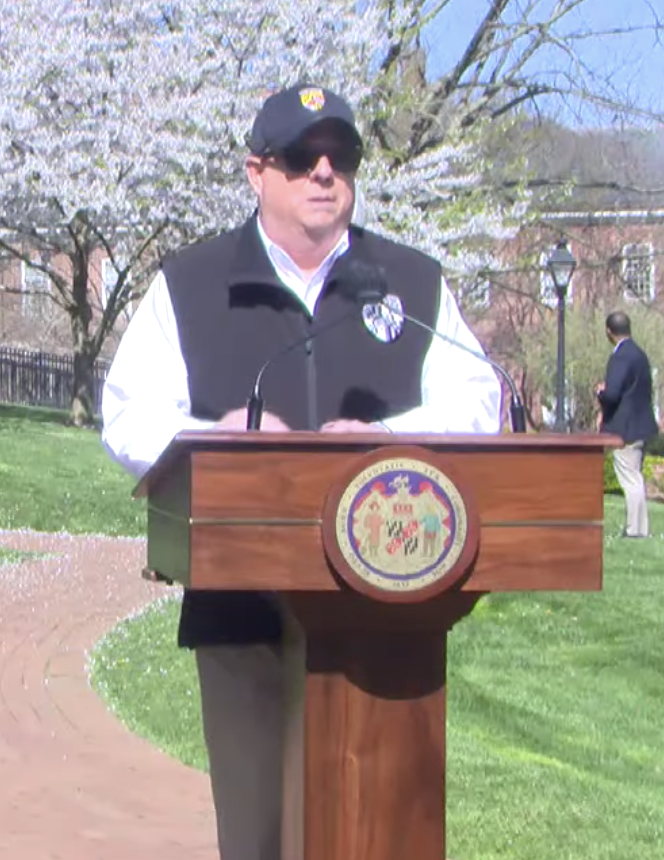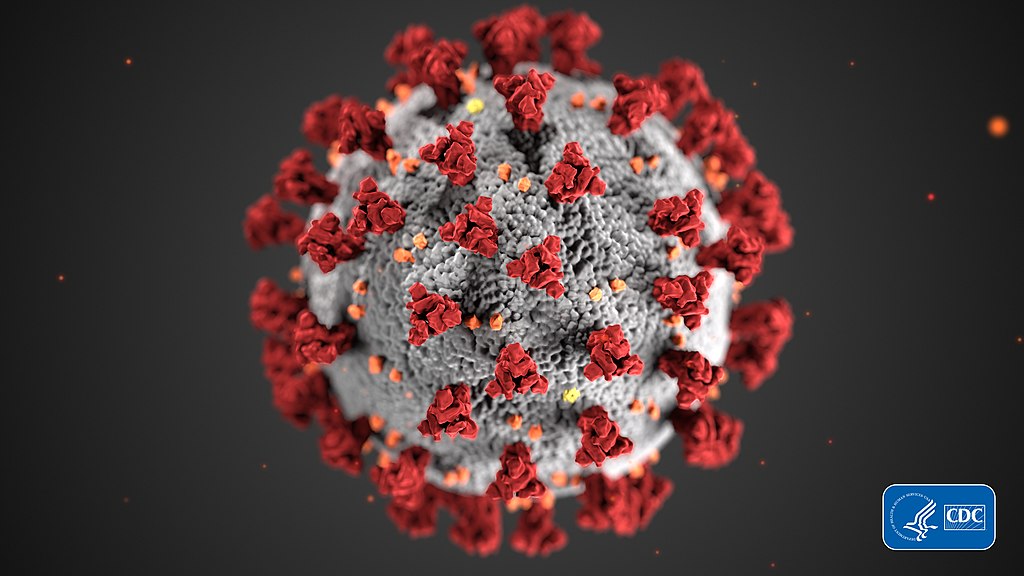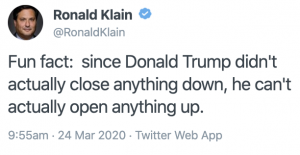Larry Hogan, Ralph Northam, and Muriel Bowser Asked for a Federal Testing Site … Two Weeks Ago
Maryland Governor Larry Hogan has been one of the most proactive governors — of either party — in his response to the COVID-19 crisis. But until yesterday, he nevertheless had not issued a stay at home order yet. He did so yesterday. By the end of the day, Virginia Governor Ralph Northam and DC Mayor Muriel Bowser had done the same.
In Hogan’s statement announcing the stay-at-home order, he emphasized the import of workers within the DC Metro Area in sustaining the country’s national security, both those generally considered national security workers (he mentioned NSA and CyberCommand) and those specifically fighting this virus (he mentioned NIH and FDA).
In that context, Hogan mentioned that two weeks ago, Northam, Bowser, and he asked the President to designate DC Metro as a priority for response to the crisis, including by setting up a federal testing site so federal workers have a way to avoid getting their colleagues sick.
Two weeks ago, the three of us sent a joint letter to the President requesting that the national capital region be designated as a priority location for a federally supported COVID-19 testing site. The Washington region is where national leaders are actually fighting this battle for the nation, and this region is about to be hit with the virus in the same way that some other major metropolitan areas have been.
We are home to more than 404,000 federal workers in Maryland, D.C., and Virginia. The NIH and FDA are headquartered in Maryland, and these agencies are on the front lines of the battle against the coronavirus.
Maryland is also home to institutions that are critical to the security of our nation, including the NSA and the U.S. Cyber Command.
Last week four employees at Fort Meade tested positive for COVID-19.
Federal workers at these institutions and all agencies of the federal government are and will continue to be getting sick. And a major outbreak among our critical federal workforce could be catastrophic, crippling the national response.
In his statement, Hogan didn’t explicitly say that Trump had not yet delivered on that Federal testing site. But by end of day, Hogan published an op-ed with Michigan Governor Gretchen Whitmer — President Trump’s current target of choice. In it, he repeated his request for a Federal testing site.
Keep “mission critical” federal workers healthy: While millions of Americans have begun working from home, “mission critical” federal employees and contractors are still reporting to work every day. More than 400,000 federal workers are based in the national capital region of Washington, Maryland and Virginia, including workers at the National Institutes of Health and FEMA. We can’t risk them getting sick when the nation is depending on their work and expertise to fight the pandemic. President Trump can help by establishing a federal testing site in the national capital region — an important step to identify sick federal workers and prevent them from infecting their colleagues.
I’m in flyover country, and I’m loathe to imagine that DC’s workers are any more important than my neighbors.
Nevertheless, the entire point of doing social distancing, for those of us who are either non-essential or can work from home, is to limit exposure for those who either need to keep vital parts of our economy running (like doctors and nurses, Amazon delivery drivers, and grocery store workers) or those who need to protect the country in other ways, even including the NSA.
Hogan’s comments yesterday suggest that President Trump didn’t even manage something really obvious and manageable: to make sure that critical federal workers have a way to ensure that they don’t infect other federal workers before they become symptomatic.
Indeed, hours after Hogan’s declaration, in Trump’s daily COVID rally, the President repeatedly bragged about our testing regime and — in yet another question from Yamiche Alcindor he tried to dodge — not only misstated the population of Seoul (possibly misreading the elevation for Seoul in its Wikipedia entry for its population), but also blamed Obama, and then insisted our testing is better than any other country’s.
Q Thank you, Mr. President. You said several times that the United States has ramped up testing. I’ll just talk a little quicker — or a little louder.
Mr. President, you said several times that the United States has ramped up testing, but the United States is still not testing per capita as many people as other countries like South Korea. Why is that? And when do you think that that number will be on par with other countries?
And Dr. —
THE PRESIDENT: Yeah, well, it’s — it’s very much on par.
Q Not per capita —
THE PRESIDENT: Look — look — per capita. We have areas of country that’s very tight. I know South Korea better than anybody. It’s a — very tight. Do you know how many people are in Seoul? Do you know how big the city of Seoul is?
Q But the question is about (inaudible).
THE PRESIDENT: Thirty-eight million people. That’s bigger than anything we have. Thirty-eight million people all tightly wound together.
We have vast farmlands. We have vast areas where they don’t have much of a problem. In some cases, they have no problem whatsoever. We have done more tests. What I didn’t — I didn’t talk about per capita. We have done more tests, by far, than any country in the world, by far.
Our testing is also better than any country in the world. And when you look at that, as simple as that looks, that’s something that’s a game changer, and every country wants that. Every country.
So rather than asking a question like that, you should congratulate the people that have done this testing, because we inherited — this administration inherited a broken system, a system that was obsolete, a system that didn’t work. It was okay for a tiny, small group of people, but once you got beyond that, it didn’t work.
We have built an incredible system to the fact, where we have now done more tests than any other country in the world. And now the technology is really booming.
I just spoke to — well, I spoke to a lot. I’m not going to even mention. I spoke to a number of different testing companies today, and the job that they’ve done and the job that they’re doing is incredible.
But when Abbott comes out and does this so quickly, it’s really unreal. In fact, one company, I have to say, that stands out in the job — and I think I can say this; I don’t want to insult anybody else — but Roche. Roche has been incredible in the testing job they’ve done. And they’re ramping it up exponentially. It’s up, up, up, up. And you should be saying congratulations instead of asking a really snarky question, because I know exactly what you mean by that.
You should be saying congratulations to the men and women who have done this job, who have inherited a broken testing system, and who have made it great. And if you don’t say it, I’ll say it. I want to congratulate all of the people. You have done a fantastic job.
And we will see you all tomorrow. Thank you very much. Thank you. Thank you.
In a call with governors yesterday, Trump claimed that he hadn’t “heard about testing in weeks.”
The subtext of yesterday’s decision by the DC metro region’s elected leadership is that Trump couldn’t even manage a no-brainer request made two weeks ago that would help to keep this country’s most essential workers safe. Sure, Larry Hogan didn’t say that explicitly. But by partnering with someone whose complaints are sure to get noticed, Hogan made it clear that Trump is still failing to deliver on the most obvious requests.



